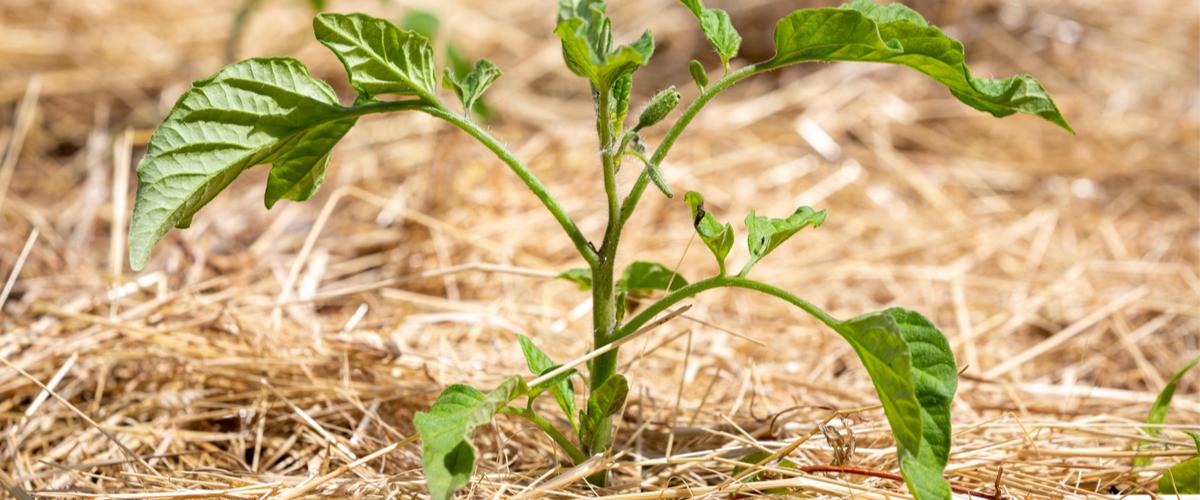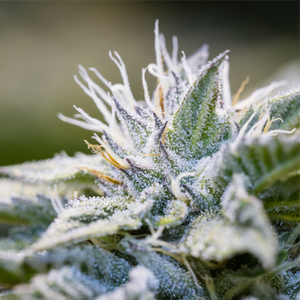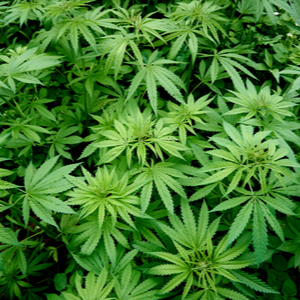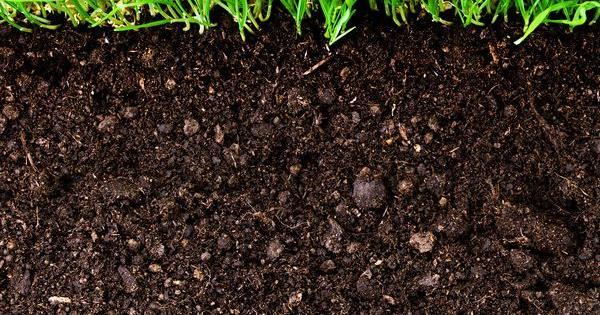- Organic growing, an environmentally-friendly practice that is also beneficial to human health, is a growing trend in the production of fruit and vegetables as well as in the production of cannabis.
- A healthy and balanced soil is key for the production of high-quality organic produce. The soil is the foundation for the optimum development of plants and has a direct impact on the final result. Today we’ll focus on the organic topsoil layer known as mulch.
- Here we’ll show you what mulch is as well as its composition and properties, and we’ll also explain its benefits as a protective layer in organic cannabis growing.

The composition and structure of the soil are two essential elements for cannabis plants to grow and develop optimally throughout their full life cycle.
But we often overlook a part of the substrate that plays a vital role in cannabis growing, namely the topsoil, which is a protective layer placed on the substrate surface.
This insulating layer can be used in indoor grows, but its use is especially beneficial when growing outdoors. Once you've read this article you'll realise why the topsoil is an undisputed ally for plants in hot, dry and cold locations.
The role of topsoil in cannabis growing
Mulch, more widely known as topsoil, is a protective layer that is used on the substrate surface. It is really effective in the prevention of excessive water evaporation; it helps the soil retain moisture; and it also prevents extreme temperature fluctuations. The thickness of this layer may vary according to the specific climate conditions.

The topsoil layer usually contains different kinds of organic waste, such as recycled forest residues from different sources. The most common are vegetable waste from previous crops (shredded stems and leaves), wood shavings, tree bark, small branches, or hay (an outstanding natural fertiliser that helps fix nitrogen in the soil).
You can also use shredded lawn trimmings to prepare mulch. However, you need to be careful with these and ensure that they don't contain any pesticides or chemical fertilisers.
Topsoil can be one of your best allies in outdoor cannabis growing, but if you want to obtain top-quality organic flowers that are both delicious and harmless, you need to pay special attention to your choice of components. Otherwise you'll possibly find traces of unwanted elements in your harvest.
Mulch is suitable for indoor organic growing, in which biological fertilisers are used; for instance in 'no-till' farming, a growing technique that uses a 'living soil' and requires a certain amount of experience. In outdoor growing the use of a topsoil layer is always a perfect bet.
What's the function of topsoil in cannabis growing?
Mulch is a true multifunctional tool in organic cannabis growing. It's like a Boy Scout's Swiss Army Knife: it works as a climate control system and maintains the overall balance of the soil, which in turn leads to optimum plant development.
Mulch promotes the development of microorganisms (microbes, bacteria, insects, and beneficial fungi) and improves the metabolic and synergistic activity of the biological agents present in the soil, which translates into a reinforced immune system and outstanding plant development.
The principal function attributed to topsoil is its insulating capacity: it can regulate the soil's temperature in any given situation.
It prevents excessive moisture evaporation on hot summer days and thus avoids significant water shortages in the soil. This protects plants against drought stress, which can lead to loss of strength and resistance during development and subsequently to a reduction in yielding capacity and crop quality (with regards to size, flower density, resin trichome production, cannabinoid levels, terpene concentration, etc).

Topsoil provides effective thermal protection in adverse situations, such as cold days or nights with low temperatures. It helps retain the heat within the substrate ecosystem so the soil's biological equilibrium isn't altered, which means that the plants' overall development is never interrupted.
Each and every one of the biological agents in the topsoil performs a specific role in the transport and metabolisation of the elements required for plant nutrition. Topsoil specifically improves nutrient assimilation. We can imagine what happens if we compare this to the map of a country, with its roads, supplies, and its transport logistics network. A team effort that ensures a balanced development and a smooth operation… it really is that simple!
You could say that this is a real autonomous community that carries out excellent teamwork with the aim of producing healthy and productive plants with outstanding properties. Saying that nature knows how to do things well is not an overstatement… The soil microbiology is a great example of this!
Despite being often underrated or unknown amongst weed growers, this is a truly crucial aspect in cannabis growing. We'd like to encourage you to keep this in mind when you prepare your next indoor or outdoor organic grow.
Reasons for using mulch in cannabis growing
The main benefits of mulch are as follows:
- It provides the soil with effective isothermal protection.
- It promotes moisture retention in the substrate.
- It provides the soil with a true climate control system in all situations.
- It improves the structure and balance of the soil's microbial life.
- It stimulates soil fertilisation, and protects and regulates the overall development of plants.
- It reinforces the plants' immune system.
- It promotes overall biological harmony within the soil.
- It optimises yield quality and capacity.




Comments from our readers
There are no comments yet. Would you like to be the first?
Leave a comment!Did you like this post?
Your opinion about our seeds is very important to us and can help other users a lot (your email address won't be made public).